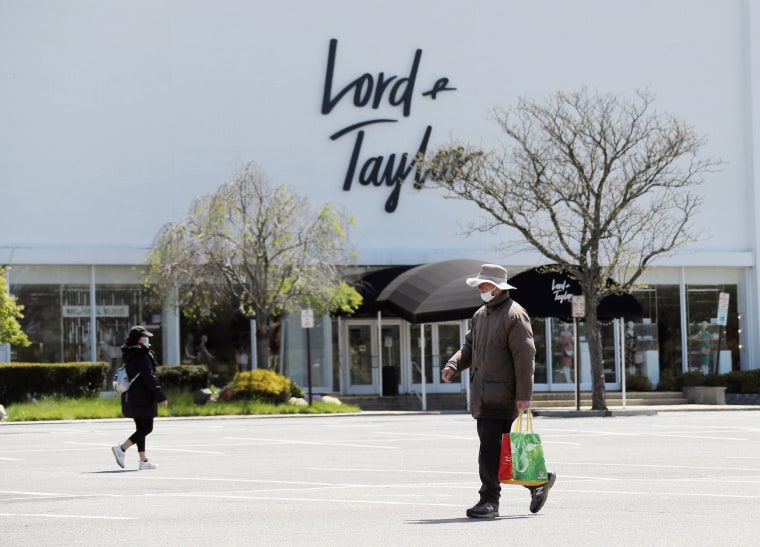After nearly two centuries in business, Lord & Taylor, America's first department store, is liquidating all of its assets and closing its doors.
The announcement on Thursday comes just weeks after the company filed for bankruptcy adding to a long list of retailers thrown into a financial downfall by the coronavirus. It will close all 38 of its remaining stores and its website. Previously it planned to keep 14 stores open.
“While we are still entertaining various opportunities, we believe it is prudent to simultaneously put the remainder of the stores into liquidation to maximize value of inventory for the estate while pursuing options for the company's brands," Ed Kremer, the Company's chief restructuring officer said in a statement.
All of the company’s existing inventory, new store arrivals and new items not previously sold at stores will be available at a deep discount. It will also sell in-store fixtures, furniture, and equipment.
“I am extraordinarily proud of the continued efforts of our store and corporate team members as they have worked tirelessly over the past several months, under unprecedented conditions, to preserve this historic brand,” said Kremer. “We have a long road ahead of us and I am grateful and humbled by the dedication and resiliency of our team."
Lord & Taylor first opened as a dry goods store in New York City’s Lower East Side in 1826. Founded by English immigrants Samuel Lord and George Washington Taylor the store grew into a mainstay for luxury shoppers and is credited for exhibiting one of the first animated Christmas window displays.
The company thrived during World War II, selling a record-breaking $2 million worth of war bonds in one day, according to its former owner Hudson Bay Company. After the war, the company was helmed by Dorothy Shaver as president, the first woman to helm a major retailer. Under her leadership the company opened its first suburban stores, introduced personal shopping and launched a dog wear line.
But the 1980s brought new challenges for Lord & Taylor as lower-priced department rivals entered the market. It was acquired by May Department Stores in 1986 and bought again by the private equity firm NRDC Equity Partners in 2006. Six years later, Hudson's Bay Company acquired Lord & Taylor, and then sold the company to Le Tote, Inc., a fashion rental subscription service.
“Lord & Taylor has always had some challenges,” said Neil Saunders, managing director of GlobalData's retail division. “It was in a part of the market that was really soft and it was difficult.”
Le Tote planned to reformat Lord & Taylor’s stores and merge its e-commerce system with the new owner’s existing app for a unified technology platform. The plan was to preserve customers profiles on the platform to bring a curated personalized shopping experience to Lord & Taylor shoppers through the Le Tote app, Le Tote CEO Rakesh Tondon told Vogue Business in November. He said the company could become profitable within 12 months.
“We want to give the customer curated product recommendations based on data shared with us, which will take away the pain point of shopping in stores, like digging through racks,” he said. “It’s a much more holistic way of responding to customers’ needs.”
But those plans snarled with the coronavirus this year. Retailers across the country were forced to close their doors in response to government shutdown orders to stem the spread of the deadly virus. Mall-based stores, such as Lord & Taylor, were hit especially hard, said Saunders with GlobalData.
Along with its peers Neiman Marcus and Barneys New York, the Lord & Taylor department store had no other choice but to liquidate in an effort to recoup some of its losses, he said.
“It shows how challenging the department store segment of retailing has become,” he added. “Investors and potential buyers have no real confidence about that model going forward.”
